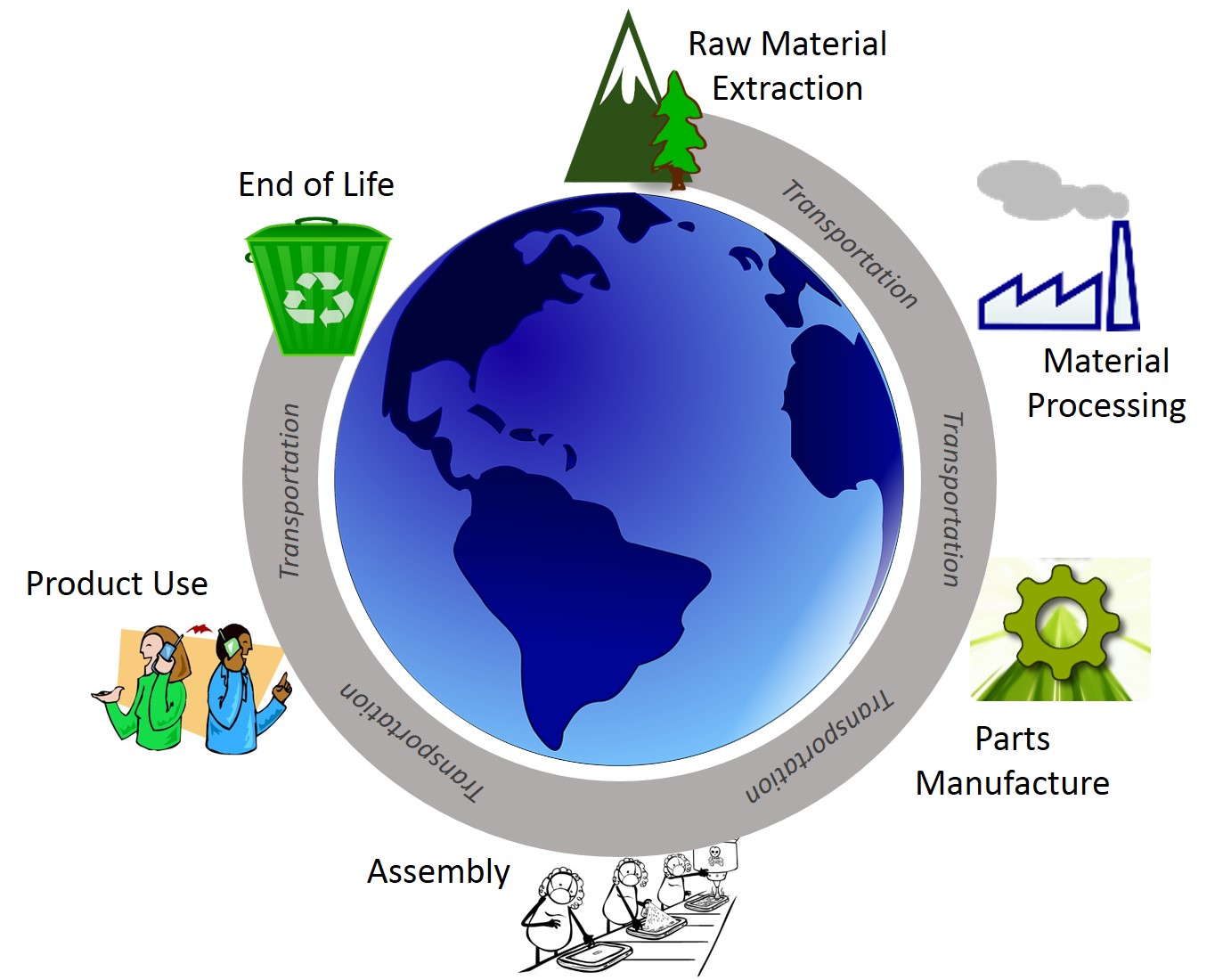Chapter 1.13: Life Cycle Assessments
A life-cycle assessment (LCA) is the “cradle-to-grave” analysis of the environmental costs associated with a given product. LCAs measure the environmental impacts of every step in the life cycle of a product, including the extraction of the raw materials; the energy needed to manufacture the product; transportation or distribution of the product to the consumer; the use of the product by the consumer; and the ultimate disposal of the product at the end of its lifespan.

Background Materials:
Defining Life Cycle Assessments (LCA): http://www.gdrc.org/uem/lca/lca-define.html
For a general review of LCA from the United Nations Environment Program, see: http://www.unep.org/resourceefficiency/Consumption/StandardsandLabels/MeasuringSustainability/LifeCycleAssessment/tabid/101348/Default.aspx
Several LCA examples from the US EPA’s Design for the Environment: https://www.epa.gov/saferchoice/design-environment-life-cycle-assessments
Textbook References and Links:
The link to an in-depth example from the US EPA’s LCA on tomato packaging: http://archive.epa.gov/wastes/conserve/tools/stewardship/web/pdf/tomato-packaging-assessment.pdf
Practice exercise: Link to the article by Keyes et al. in the Journal of Cleaner Production that describes an LCA of organic vs conventionally grown apples in Nova Scotia, Canada: http://www.sciencedirect.com.ezproxy.uvm.edu/science/article/pii/S0959652615005843
Downloadable data and files: NA


